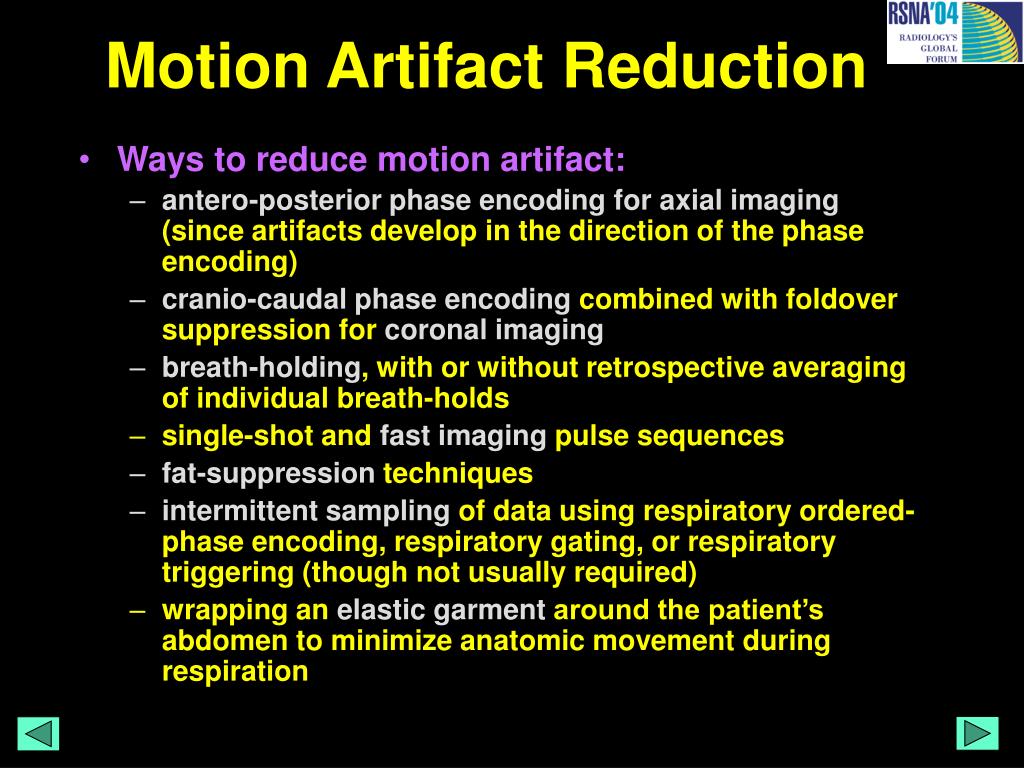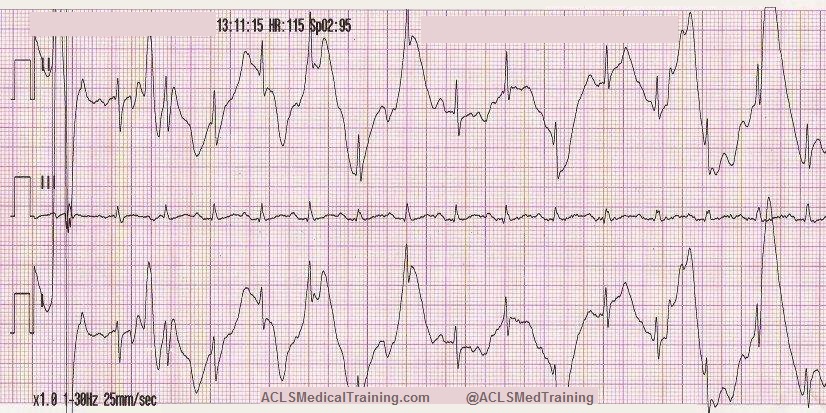

Another category of motion induced artifact that can cause signal loss and.
#Motion artifact meaning software
Software that can correct for motion would be valuable, as would efforts to reduce sequence acquisition time. Check for medical artifact Common artifacts which affect image quality include movement, beam-hardening and scatter Do not view only a single slice in. Magnetic field uniformity is usually reported as the root mean square (rms). Still, the potential costs of MRI motion artifacts are likely to be significant anywhere, and the authors suggested greater attention should be paid to this problem. Results across the country could vary widely as well, owing to geographic variability in reimbursement, payer mix, practice patterns, and other factors. The one-week sample of scans is a limitation, as there could be significant week-to-week variance. This technique continuously acquires low resolution images during motion, then. The authors did note that precise estimates of costs are difficult and that they used a simplified, averaged-cost approach. Inter-shot motion correction is applied for reducing in-plane motion artifacts. They suggested this difference stems from the fact that outpatients are presumably healthier and in less acute distress than inpatients.Īfter reviewing institutional data to determine the cost of lost scanner time, Andre and colleagues determined the potential cost to the hospital was $592 per hour in lost revenue due to motion artifacts, equating to an average cost of approximately $115,000 per scanner per year. Once broken down by patient disposition, the authors reported that 7.5 percent of outpatient exams and 29.4 percent of inpatient and/or emergency department exams had significant motion artifacts. A pair of blinded neuroradiologists visually reviewed the scans and used a five-tier scale to measure the presence of motion artifacts, from “none” to “severe.”Īcross 192 completed clinical exams in the sample, nearly one-in-five (19.8 percent) had to be repeated due to motion artifacts. The sample came from April 2014 and included scans from three different scanners. To get an estimate of the significance of this issue, Andre and colleagues retrospectively reviewed one randomly selected week’s work of MR exams conducted at Harborview Medical Center. As the name implies, motion artifacts are caused by motion of the imaged object or a part of the imaged object during the imaging sequence. Despite these challenges, the authors were surprised that few studies have looked at the prevalence or impact of motion artifacts in clinical MR exams. Motion artifacts such as blurring or ring artifacts can affect interpretation, and advanced MR techniques are particularly at risk as they rely on high spatial resolution and greater sequence complexity, noted Andre and colleagues. Their findings were published online in the Journal of the American College of Radiology. Artifacts defined as either any signal or void in the images that does not have an anatomic basis, or as the result of distortion, addition or deletion of.

Andre, MD, of the University of Washington in Seattle, and colleagues. “These costs may affect much of the global MR community, reducing resource efficiency and the quality of patient care,” wrote authors Jalal B. Just how costly is patient motion? A recent study from Harborview Medical Center in Seattle pegged the potential cost of motion artifacts at $115,000 per scanner per year. Repeated scans take time, and tied up scanners can affect a hospital’s bottom line. Furthermore, these artifacts will be propagated in the phase-encode direction regardless of whether the physiologic motion has occurred in the frequency-encode, phase-encode, or slice-select directions.When a patient moves during an MRI, it can mean having to redo the scan.

Conversely, since the phase sampling interval is generally equal or longer than the period of most physiologic motions, artifacts will be more prominent in this direction. Because these motions are slow in relation to the frequency-encode sampling interval, they typically produce only a small amount of spatial blurring locally in the frequency-encode direction. Most gross physiologic motions (respiration, swallowing, cardiac pulsation) occur over time frames of a hundred milliseconds to several seconds. Conversely, the time to obtain a single sample in the phase-encode direction is on the order of seconds to minutes, since essentially all lines of k-space must be collected to obtain the complete data set for Fourier reconstruction. In the frequency-encode direction, all 256-512 samples of a signal are acquired in the space of a single echo (e.g., over 5-80 msec). In 2DFT imaging, considerable disparity exists between sampling times for data collection in the frequency- and phase-encode directions.


 0 kommentar(er)
0 kommentar(er)
